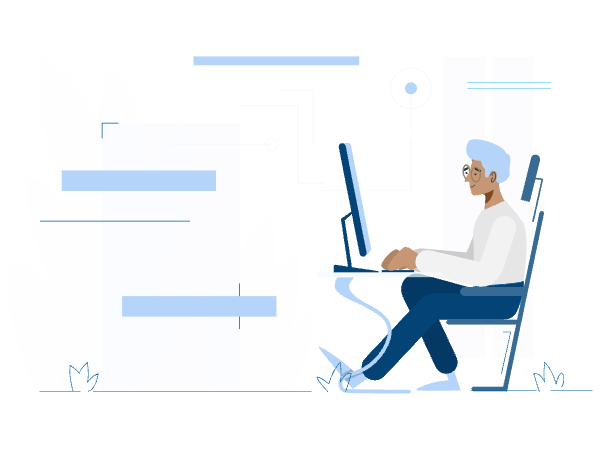401(k) Leakage is Crushing Your Employee’s Retirement Dreams.
When it comes to your employer-sponsored retirement plan, we have good news and bad news.
First, the good news. Your employees have never been more engaged in workplace retirement plans: 56% of workers participate in one, with 43% contributing directly to a 401(k), 403(b), or similar account.
That’s great, especially when you’ve worked so hard to implement and promote these programs. But now—the bad news.
Your employees are feeling more and more financially stressed, and, unfortunately, they’re raiding their retirement savings to cover short-term expenses.
Yep. According to a study by Magnify Money, 52% of Americans tapped into their retirement funds to pay off debt (23%), pay for college (11%), cover medical bills (9%), and even put a down payment on a home (17%).
Let that sink in for a second.
These numbers can feel pretty discouraging, especially when you’ve paid thousands in account fees to offer 401(k)s and other retirement plans as a benefit. What’s the point if your employees treat company-sponsored retirement plans like an expensive emergency fund?
To get to the bottom of this problem, we need to look at 401(k) leakage, the financial stresses that cause it, as well as potential solutions to it.
What is 401(k) leakage?
401(k) leakage is the early withdrawal of retirement savings, usually done long before the age of retirement. Hardship withdrawals, cash outs, and 401(k) loans are all examples of 401(k) leakage.
How severe is 401(k) leakage?
Pretty severe. A study from Boston College’s Center for Retirement Research in fact, says that 401(k) leakages could reduce an employee’s wealth by 25%.
And that’s a conservative estimate.
To give you an idea of this, imagine you have two employees. Each starts with a $40,000 salary (getting a 1.1% raise each year), contributes 6% of their pay to their 401(k) (with a 50% match), and enjoys a modest growth of 4.5% annually.
Employee Number One leaks 1.5% from their 401(k) each year. After 30 years, he’s left with $203,000. Employee Number Two, however, doesn’t touch her 401(k). And at the end of 30 years? She’s left with $272,000, around $69,000 more than Employee Number One.
Imagine higher salaries with higher withdrawals and you’ll see how 401(k) leakage can become a big problem.
What are the different kinds of 401(k) leaks?
Money leaks out of 401(k)s in three big ways:
1. Cash-outs
Your employees invest steadily while they’re with you, but what happens when they leave?
Well, according to Savings Preservation Working Group, 33 – 48% are withdrawing some or even all of their retirement plan. This is what’s known as a cash-out, and, unfortunately, it’s becoming a common practice when employees change jobs.
Exactly how much is lost to cash-outs is uncertain, but one thing is clear: it’s a lot. EBRI found that $92.4 billion was lost to early 401(k) cash-outs in 2015 (the latest year we have data on). To put that in perspective, $92.4billionis more than the GDP of 147 countries and 13 U.S. States.
Why are employees cashing out? Around one-third of employees cash-out 401(k)s due to financial stress, while the other two-thirds cash-out because they encounter too much “friction” in rolling that money into a Roth IRA or another 401(k).
In other words, employees empty their 401(k) when they change jobs so they can relieve financial burdens or … take the path of least resistance.
2. In-service withdrawals.
The opposite of a cash-out, the in-service withdrawal happens when your employees take money out of their retirement accounts while they’re still working for you (hence “in-service”).
In-service withdraws include hardship withdrawals, which, as you can guess, means employees are using funds in retirement plans to cover emergency expenses, such as medical bills or damage from a natural disaster.
Hardship withdrawals can come with a steep 10% tax penalty for each withdrawal made (waived, however, if your employees meet certain exceptions), and they are subject to income taxes, as well.
3. 401(k) Loans
401(k) loans are exactly as they sound: an employee “borrows” money from their 401(k), then pays it back in the form of a loan. The IRS caps withdraws at 50% of your employee’s savings, up to a maximum of $50,000, though depending on your plan, it could be less.
What causes 401(k) leakage?
Yeah, good question.
While there’s no substantive data on the reasons behind 401(k) leakages, it seems safe to say financial stress is a major motive. In fact, a survey by Magnify Money reported that in 2020, nearly 30% of Americans withdrew an average of $6,757 from their 401(k)s to cover everyday expenses like, yep … groceries.
This goes hand-in-hand with PwC’s 2020 survey on employee financial wellness. Not only did 58% of employees cite financial matters as the top stressor in their lives (three times more than the second stressor, their jobs), 44% said they would use money in retirement plans for something other than retirement.
From the study: “Already more than half of Millennial and Gen X employees told us it was likely they would use money held in their retirement plans for something other than retirement, the vast majority for unexpected expenses or medical bills.”
In sum, your employees are using a long-term benefit—retirement accounts—to solve short term problems, usually emergencies. How can you stop this from happening?
How to plug a 401(k) leakage
401(k) leakages are not going away on their own. Something needs to happen. And it needs to happen fast. While it may take some time to implement solutions, here are three steps that will take you in the right direction.
1.Accept that 401(k) leakage is a problem.
First off, you have to accept that 401(k) leakage is a major problem for you, not just sad news. Employees who continue to misuse their 401(k) funds not only push retirement out of reach but waste a good thing, your retirement benefits. And if you’re matching their contributions? Well then. Consider that money wasted, too.
But there’s an even deeper problem here: increased stress and lost productivity.
By making these early withdrawals, your employees grease the wheels of an infinite stress loop: using 401(k) money to alleviate short-term stress makes them feel even more stressed about not having enough in retirement. That, in turn, causes them to zone-out on the job, which will have the added effect of stressing you out.
2. Encourage 401(k) rollovers.
To stop your employees from cashing out, be sure your employees know what a 401(k) rollover is, as well as how they can do one. More likely than not your former employees cashed out their 401(k)s simply because they thought the rollover process would be too complicated. A little education, even in the form of a “farewell” document, can go a long way in showing them what to do.
You can also look into “auto-portability,” which refers to the automatic transfer of retirement savings to either a separate retirement account or a new employer’s account.
Sounds nice, right? Well, before you get too excited, auto-portability services aren’t available to everyone just yet. But with a growing desire for it—especially with backing from EBRI and the recent launch of one—it’s something to look for in the future.
For now, make sure your employees know how to rollover their 401(k).
3. Offer financial products that reduce the temptation to borrow from a 401(k).
One of the best things you can do right now is give your employees access to a salary-linked loan. Not a loan with a ridiculously high APR. Not a revolving line of credit that keeps them trapped in debt. An affordable loan that’s attached to their salary, which stops them from dipping into their retirement savings and keeps them on track to repay the loan.
But can a salary-linked loan really stop 401(k) leakage?
We think so.
Here’s why. Your employees are most likely turning to their retirement accounts as a last resort. Maybe they’ve depleted their emergency funds, maybe they didn’t have an emergency fund, maybe they’re so stressed about money—about bills and groceries and getting the creditors off their tail—they aren’t thinking straight, and in the absence of a better alternative, they pay the penalties and withdraw money.
A salary-linked loan gives them that better alternative. When an emergency strikes, they won’t feel tempted to raid their 401(k)s: they’ll have a responsible safety net, which in the end helps them stay focused at doing what they do best—their job.
Plug up a 401(k) leakage with a salary-linked loan.
Don’t let 401(k) leakage drain your employee’s retirement dreams. Reach out to us today, and we’ll help you plug up this problem today.


